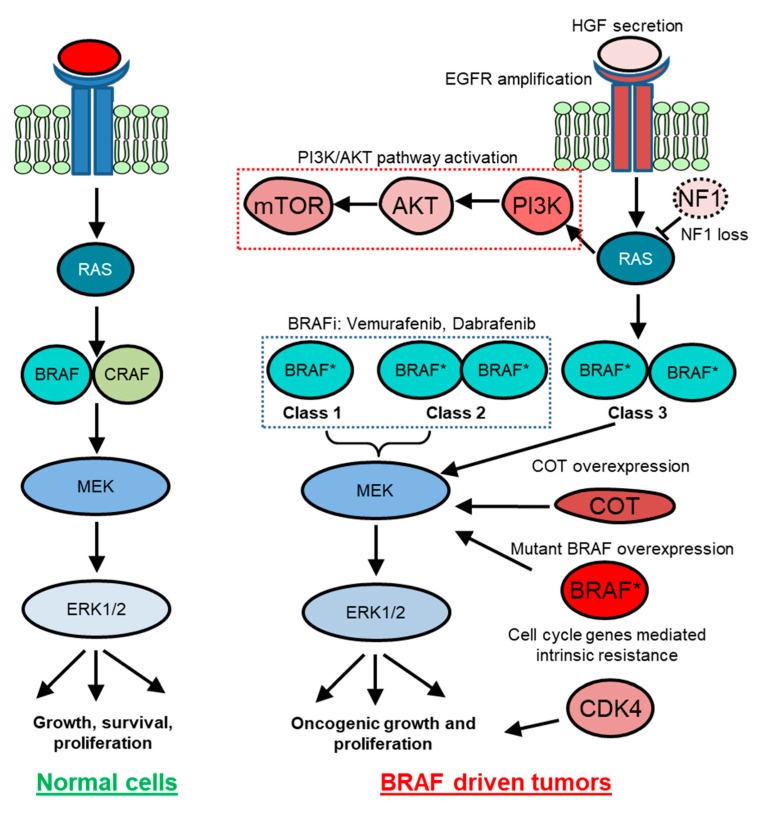Figure 3.
BRAF-mediated signaling in normal and cancer cells. In normal cells, external growth stimuli activate receptor tyrosine kinase (RTK) and RAS, which relays growth signals to the mitogen-activated protein kinase (MAPK) pathway kinase cascade. In BRAF-driven cancers, mutant BRAF (BRAF *) can either act RAS independently as a monomer (Class 1) and as a dimer (Class 2) or act RAS dependently (Class 3) to hyperactivate cellular growth. Class 1 and Class 2 tumors respond to BRAF inhibitor-targeted therapy. However, various intrinsic or adaptive resistance mechanisms attenuate response to targeted BRAF inactivation. For example, preexisting NF1 loss, CDK4 mutations, and increased COT and YAP expression may specify intrinsic resistance. Therapy-induced HGF secretion and PI3K-AKT pathway activation are examples of some of the adaptive resistance mechanisms. On the other hand, EGFR-amplified population gives rise to acquired resistance to BRAF inhibitors.

